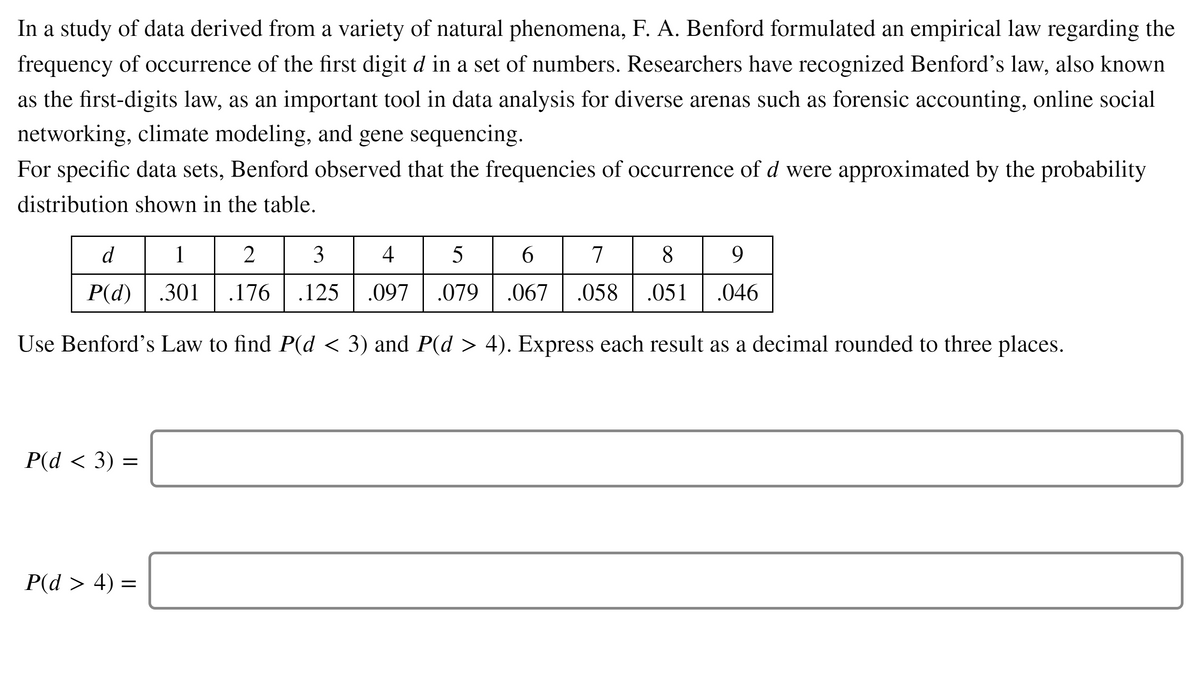In a study of data derived from a variety of natural phenomena, F. A. Benford formulated an empirical law regarding the frequency of occurrence of the first digit d in a set of numbers. Researchers have recognized Benford's law, also known as the first-digits law, as an important tool in data analysis for diverse arenas such as forensic accounting, online social networking, climate modeling, and gene sequencing. For specific data sets, Benford observed that the frequencies of occurrence of d were approximated by the probability distribution shown in the table. 1| 2 d 3 4 5 6. 8 9 P(d) .301 .176 .125 .097 .079 .067 .058 .051 .046 Use Benford's Law to find P(d < 3) and P(d > 4). Express each result as a decimal rounded to three places. P(d < 3) = P(d > 4) =
Unitary Method
The word “unitary” comes from the word “unit”, which means a single and complete entity. In this method, we find the value of a unit product from the given number of products, and then we solve for the other number of products.
Speed, Time, and Distance
Imagine you and 3 of your friends are planning to go to the playground at 6 in the evening. Your house is one mile away from the playground and one of your friends named Jim must start at 5 pm to reach the playground by walk. The other two friends are 3 miles away.
Profit and Loss
The amount earned or lost on the sale of one or more items is referred to as the profit or loss on that item.
Units and Measurements
Measurements and comparisons are the foundation of science and engineering. We, therefore, need rules that tell us how things are measured and compared. For these measurements and comparisons, we perform certain experiments, and we will need the experiments to set up the devices.
Help!!

Trending now
This is a popular solution!
Step by step
Solved in 2 steps




